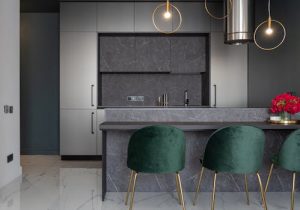Flexible Spaces: Adapting Homes for Work and Play
In the ever-evolving landscape of remote work and dynamic lifestyles, the concept of “home” has taken on new meaning. No longer just a place to rest and recharge, our homes have become our offices, schools, gyms, and entertainment centers. As our lives continue to blend together, the need for flexible spaces within our homes has become crucial. From multifunctional rooms to adaptable furniture, homeowners are reimagining their living spaces to seamlessly accommodate both work and play. In this article, we will explore the growing trend of flexible spaces and how they are transforming the way we live.
The Rise of Flexible Spaces
The pandemic has not only changed the way we work but also the way we live. With the majority of the workforce shifting to remote work, the lines between professional and personal spaces have blurred. As a result, many homeowners have had to create designated workspaces within their homes. However, with the uncertainty of the future of work, the idea of a fixed home office may not be feasible for everyone. Thus, the demand for flexible spaces has risen significantly.
Multifunctional Rooms
One of the most popular ways to incorporate flexibility in our homes is through multifunctional rooms. These spaces serve more than one purpose, allowing homeowners to adapt them to their needs. For example, a guest room can also double as a home office or a workout room. Bifold doors, sliding doors, and room dividers can be used to easily transform a space from one function to another. This not only maximizes the use of available space but also provides the option to switch between work and play seamlessly.
Convertible Furniture
Another way to create flexible spaces is through the use of convertible furniture. The rise of small-space living has led to innovative designs that can transform a piece of furniture from one function to another. For instance, a dining table can also serve as a work desk, and a sofa can easily turn into a bed for overnight guests. These furniture pieces are not only practical but also save valuable space in smaller living quarters.
Designing for Flexibility
Creating a flexible space within your home requires careful planning and consideration. When designing a space, keep in mind the functionality you want to achieve and the activities that will take place there. In addition, it’s essential to have a clear understanding of your daily routine and how the space will be used. This will help in determining the type of furniture, layout, and storage solutions needed to make the space adaptable.
Minimizing Clutter
Flexibility and clutter do not go hand in hand. To maintain a versatile space, it’s essential to keep it organized and clutter-free. Consider investing in storage solutions such as shelves, baskets, and cabinets to keep your space tidy. Additionally, choose furniture pieces that have built-in storage to maximize space and keep clutter at bay.
Maximizing Natural Light
Natural light has a significant impact on our mood and productivity. When designing a flexible space, try to incorporate as much natural light as possible. This can be achieved through large windows, skylights, or glass doors. Natural light not only makes a space feel more inviting but also lessens the need for artificial lighting, saving energy and reducing utility bills.
The Future of Flexible Spaces
The need for flexible spaces is here to stay, even after the pandemic is over. As our lifestyles continue to evolve, so will our homes. The concept of work-play flexibility is also permeating into the world of interior design. From modular furniture to smart technology, homes are becoming more adaptable and responsive to our changing needs.
From creating a balance between work and personal life to maximizing the use of space, flexible spaces have proven to be a valuable asset to homeowners. With careful planning and design, these spaces can truly transform the way we live and cater to our ever-evolving lifestyles. So why settle for just a “home” when you can have a flexible sanctuary that can adapt to all aspects of your life?







